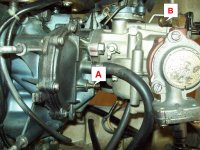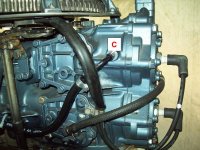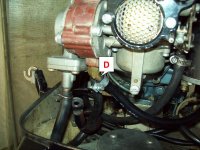I have something of an Evinrude/Johnson Frankenstein. The engine was originally a 1963 Johnson 40HP with electric shift. At some point the lower end was replaced by the previous owner with a mechanical shift unit so the cut-out switch was removed. The power head is from a 1963 Evinrude Lark and is equipped with a water controlled automatic choke. Somewhere along the line the choke-to-cylinder hose was removed and the auto choke boss elbow in the cylinder head replaced with a screw in plug. The choke-to-exhaust-housing hose is still there but disconnected at the choke end and plugged. When I removed the plug from the hose a small amount of what appeared to be clear amber coloured oil dripped out. If possible, I would like to reactivate the water system to the choke so it is fully functional again and I would appreciate it if someone could help me with the following questions:
1. Would the elimination of the hoses to the choke be related to the change from electric to mechanical shift or is this just a coincidence? I don't see how they would be related but I also don't want to leave anything to chance.
2. What would be the danger, if any, in reconnecting the choke hoses? I have installed a new choke spring already.
3. Are there any other considerations that I should be aware of?
Thank you.
1. Would the elimination of the hoses to the choke be related to the change from electric to mechanical shift or is this just a coincidence? I don't see how they would be related but I also don't want to leave anything to chance.
2. What would be the danger, if any, in reconnecting the choke hoses? I have installed a new choke spring already.
3. Are there any other considerations that I should be aware of?
Thank you.




